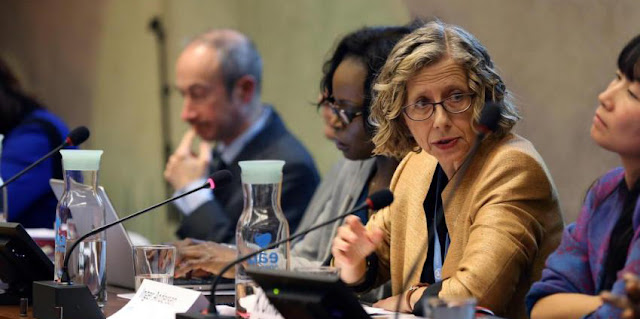Every year, the UN Environment Programme launches a report on the state of global emissions.
The report is an assessment of the global effort toward the reduction of greenhouse gas emissions and limiting climate change.
In a document, known as the Emissions Gap Report (EGR), UNEP makes a science-based assessment that is crucial to understanding the world’s position when it comes to the levels of harmful emissions in the earth’s atmosphere especially regarding the period between 2020 and 2030.
It draws heavily from the Paris goals and other multinational agreements, also rooted in science, requiring emission-reduction to levels well below 2 degrees.
In 2019, the report predicted an emissions-rise by 3.2°C, an increase despite scientific warnings and political commitments from member states.
The rise was due to an over production of gasses that have a heat-trapping effect on the earth’s atmosphere, also known as the greenhouse effect. The Australian and Californian fires are just some of the worst cases of extreme global warming
Whereas the presence of such gasses in the planet’s airspace is a good thing, the excesses continually lead to extreme cases of global warming and adverse effects to climate patterns and ecosystems.
With the greenhouse gasses seemingly rising at an alarming rate of 1.5% every year with a brief stabilization in 2014/16, data casts a bleak future for the state of our climate but sustainable solutions remain our ever present hope.
Member states must rise above challenges of lethargy when it comes to honoring climate commitments such as the Nationally Determined Contributions (NDC) under the United Nations Framework Convention on Climate Change (UNFCCC)
The G20 countries which account for 78% of the world’s GHG emissions are yet to fully meet their 2030 NDC commitments despite collectively, being on track to honoring their limited 2020 Cancun Pledges.
Africa’s rainbow nation; South Africa - also a member of the G20 - is among seven nation that require further action of varying degree in order to achieve her NDCs.
While our unfettered efforts through the NDCs could conceivably yield us a 66 percent chance of bringing down warming to 3.2 degrees Celsius, the treaties that bind us merely guarantee us a 0.2-degree decrease.
Prior to the EGR, the Production Gap report, which is yet another report by the UN, tells of a similar tale. Placing emissions resulting from fossil fuel production at 39 Billion tons of Carbon dioxide being representative of up to 53 per cent inconsistent with the Paris agreements of 2 degrees.
Valuable solutions such as strengthening of the NDCs for the year 2020 are needed. Partner states must now resolve to increase their commitments and their national targets even ‘threefold’ as captured in the 2019 report.
When this is done, it should be from a place of self-drive, we do not have to wait for a climate emergency. As a matter of fact, the report captures it better by stating that a fivefold increase of NDC ambition would result in the achievement of 1.5-degree Celsius goal.
African countries have the chance to realize this commitment, not because it is an easy pick, rather, because scientific reports have it that African countries are the worst hit by climate change.
Another productive solution would be, for the G20 members to strive to keep up to their end of the bargain. Africa’s South Africa must provide the direction for the rest of Africa.
South Africa and the rest of the G20 states must support their commitments with action, for instance on the deforestation and on the fossil-fuel targets otherwise things ‘on the ground’ will remain ever so different.
Furthermore, decarbonizing the global economy with an aim of benefiting humanity and the earth. Africa experiences the bulk of this problem thanks to the overreliance of fossil fuel as a driver to key sectors of the economy.
UNEP’s executive director Inger Andersen’s observation that the world's energy supply remains dominated by coal, oil and gas, driving emission levels that are inconsistent with climate goals is truly the case.
Sectors such as transport must rethink its ways and introduce efficient and sustainable fuel, electro-mobility is also a great idea.
Equally, we must (no choice, really) prioritize on renewables. We have seen the negative effects of coal, for instance to the economy and to human health. Kenya leads therest of Africa when it comes to wind generated power. Greater efforts must be seen in the Solar and other clean sources in order to save the planet.
The emissions gap report estimates that climate policies that are consistent with the 1.5-degree Celsius goal will require funding to the tune of US$1.6 trillion and US$3.8 trillion per year globally on average over the 2020-2050-time frame.
As a requirement, global interdependence and collaboration must continually be fostered. These partnerships must be created by the individual states voluntarily and in a free context because it is only then that they will not renege on their commitments.







0 Comments